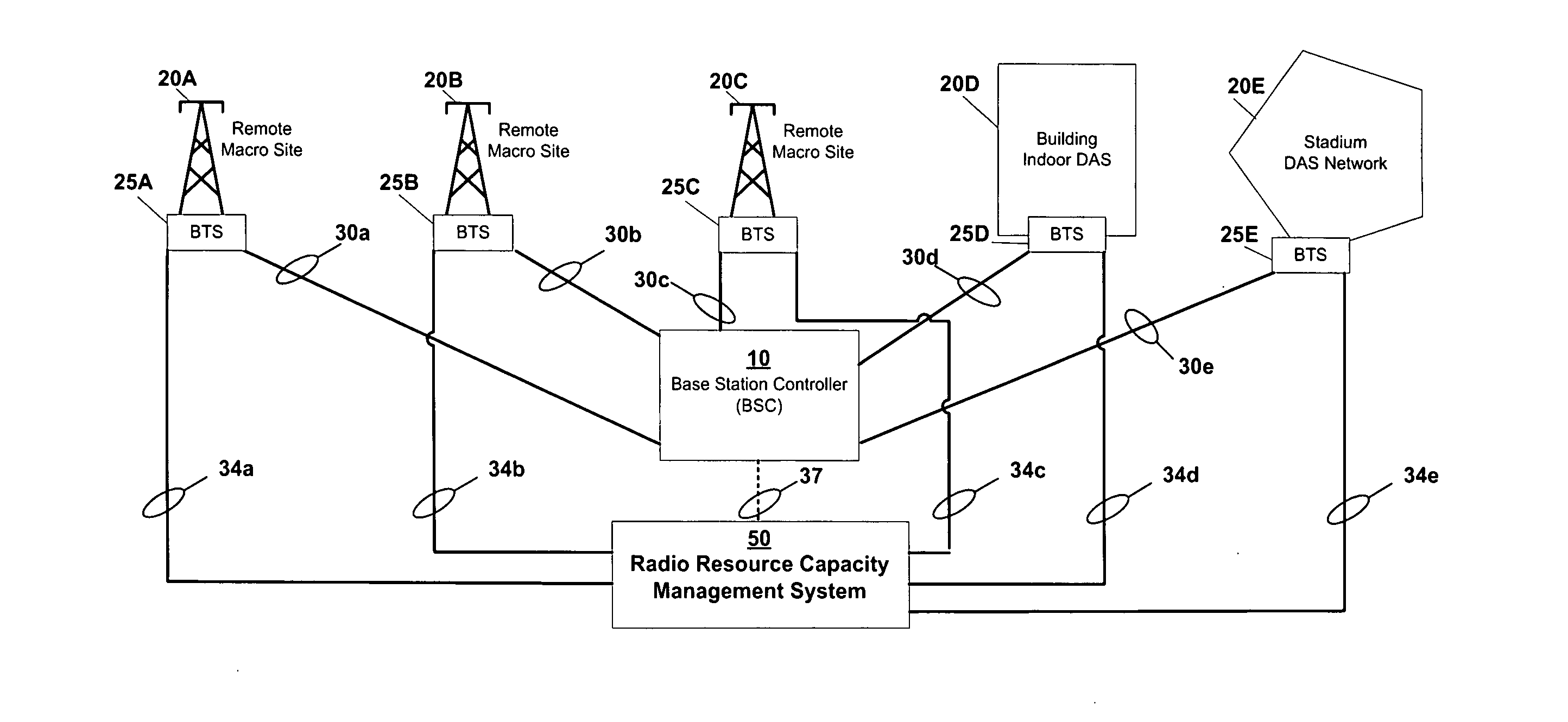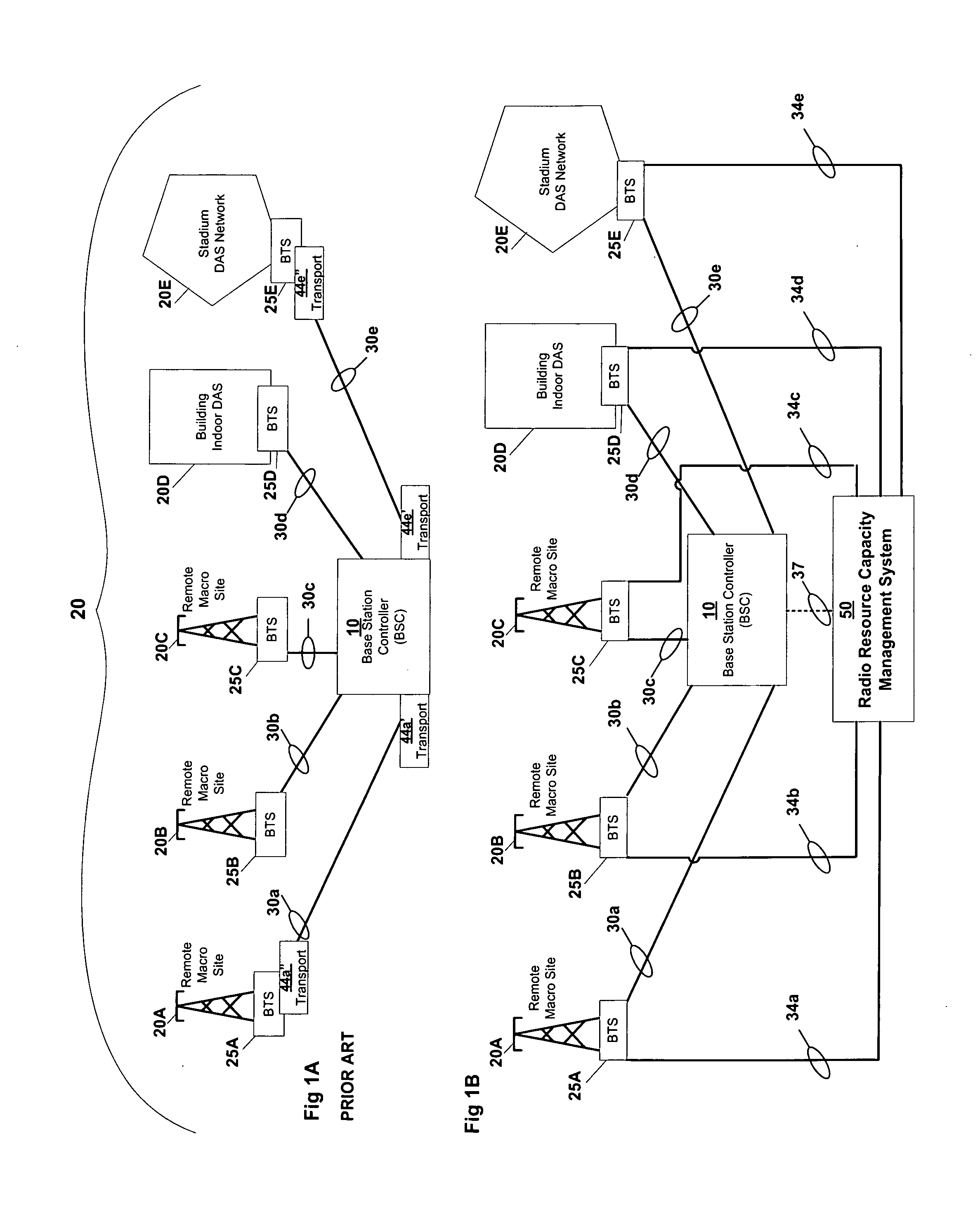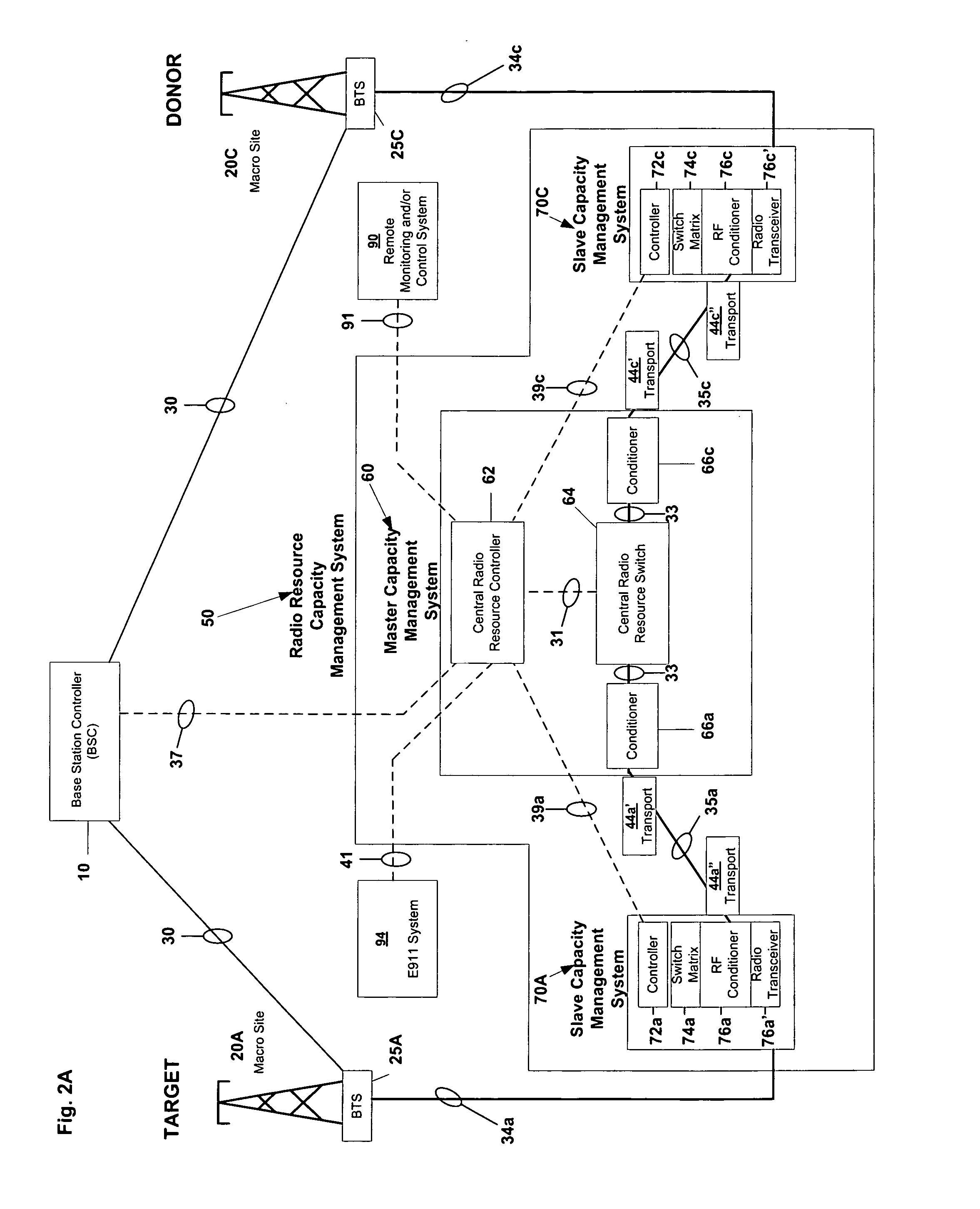Method and system for switching cellular base station capacity
a technology of cellular base station and capacity, applied in the direction of substation equipment, network traffic/resource management, electrical equipment, etc., can solve the problems of inability to install in some service areas, inability to maintain transceiver hardware, and high cost of redundant radio transceiver hardware, so as to eliminate expensive, redundant radio channel resources, and maximize the overall system efficiencies
- Summary
- Abstract
- Description
- Claims
- Application Information
AI Technical Summary
Benefits of technology
Problems solved by technology
Method used
Image
Examples
first embodiment
[0043]In a second aspect of the invention, shown in FIG. 2B, the physical reallocation of the radio channel resources in accordance with the invention is accomplished by utilizing the existing prior art backhaul transport means 30a-30e which are present in all wireless cellular communications systems, instead of providing an additional, independent backhaul transmission infrastructure. As was explained in reference to FIG. 1A, the backhaul transport means 30a-30e is employed to communicatively connect the BSC 10 to the base transceiver stations 25a-25e as a means to support control commands between the BSC 10 and each remote base transceiver station 25a-25e. The backhaul transport means is also employed to simultaneously carry user voice and data traffic. As FIG. 2B shows, when the existing backhaul transport means 30 is used, then the RRCMS 50 must be first interfaced with the existing backhaul transport interfaces 44a′-44e′ by interconnection with the respective independent backha...
second embodiment
[0051]Turning attention to FIG. 4A, the invention will now be described. In this embodiment, a suggested arrangement of the network is provided wherein it is seen that a centralized base transceiver station 80 (CBTS) has been added to the RRCMS 50, as well as the central conditioner. Preferably the CBTS 80 could be located in the same physical location as the MCMS 60, although it could be located anywhere within the operating area of the BSC 10 that it is in communication with. For clarity's sake, even though all of the conditioners within the RRCMS 50 of this embodiment are identical, each of the conditioners has been respectively labeled as conditioner 66a, 66c, and 66n. In this example, because the resources will be reallocated from the donor macro site 20C to the target macro site 20A, the right-most conditioner 66c will be considered the input conditioner, and the conditioner 66a would be considered the output conditioner. However, as mentioned earlier, the label “input” and “o...
fourth embodiment
[0073]The RRCMS 500 of this fourth embodiment may also include an E911 system 940 and a remote monitoring and control system 900 that would be interfaced to the RRCMS 500 through the respective bi-directional data links 410 and 910. The E911 system 940 and the remote monitoring and control system 900 function exactly as described earlier herein with respect to FIG. 2A.
PUM
 Login to View More
Login to View More Abstract
Description
Claims
Application Information
 Login to View More
Login to View More - R&D
- Intellectual Property
- Life Sciences
- Materials
- Tech Scout
- Unparalleled Data Quality
- Higher Quality Content
- 60% Fewer Hallucinations
Browse by: Latest US Patents, China's latest patents, Technical Efficacy Thesaurus, Application Domain, Technology Topic, Popular Technical Reports.
© 2025 PatSnap. All rights reserved.Legal|Privacy policy|Modern Slavery Act Transparency Statement|Sitemap|About US| Contact US: help@patsnap.com



